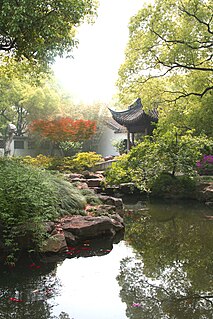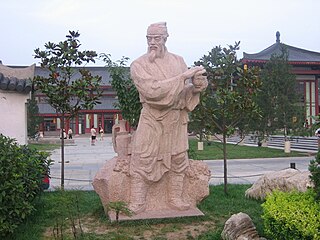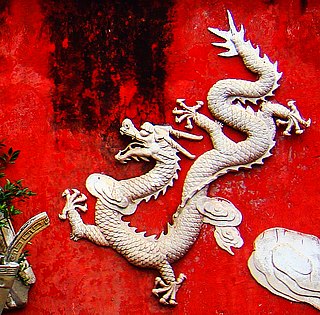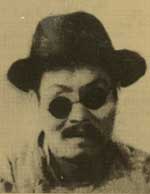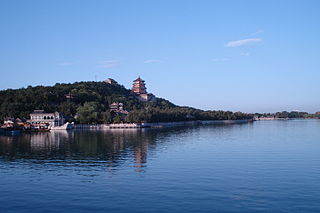
The Summer Palace, is a vast ensemble of lakes, gardens and palaces in Beijing. It was an imperial garden in the Qing Dynasty. Mainly dominated by Longevity Hill and Kunming Lake, it covers an expanse of 2.9 square kilometres (1.1 sq mi), three-quarters of which is water.

The Guanghua Temple, also known as the South Mountain Guanghua Temple (南山广寺), is a Buddhist temple located at the foot of Mount Phoenix (凤凰山), about 2 kilometres (1.2 mi) south of Putian City, Fujian Province, People's Republic of China.
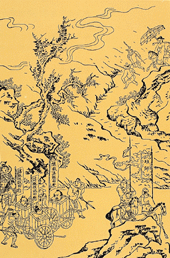
Water Margin, also translated as Outlaws of the Marsh, Tale of the Marshes, All Men Are Brothers, Men of the Marshes or The Marshes of Mount Liang, is a Chinese novel attributed to Shi Nai'an. Considered one of the Four Great Classical Novels of Chinese literature, the novel is written in vernacular Chinese rather than Classical Chinese.

Mount Lao, or Laoshan is a mountain located near the East China Sea on the southeastern coastline of the Shandong Peninsula in China. The mountain is culturally significant due to its long affiliation with Taoism and is often regarded as one of the "cradles of Taoism". It is the highest coastal mountain in China and the second highest mountain in Shandong, with the highest peak (Jufeng) reaching 1,132.7 metres (3,716 ft). The mountain lies about 30 kilometres (19 mi) to the northeast of the downtown area of the City of Qingdao and is protected by the Qingdao Laoshan National Park that covers an area of 446 square kilometers.
Lotus Pond is an artificial lake and popular tourist destination on the east side of Zuoying District in Kaohsiung, Taiwan. Opened in 1951, it is famous for the lotus plants on the lake and the numerous temples around the lake, including the Spring and Autumn Pavilions (春秋閣), the Dragon and Tiger Pagodas (龍虎塔), and the Confucian Temple (孔廟).
The original bamboo stove was made in China in the late 14th century. A monk named Xing Hai in the Ting Song temple on Mount Hui in Wuxi asked a travelling bamboo artisan to make him a stove on which he could boil water for tea. Surprisingly, it included bamboo to form the frame of the stove. The sides were cemented with clay and the inside walls and the ring on top were iron. It was about a foot tall, with a cylindrical top and square bottom, similar in shape to the Qian Kun (Heaven-Earth) mythological pot or a cong.
The Longtaitou Festival, also known as the Eryue'er Festival(二月二), is a traditional Chinese festival held on the second day of the second month of the Chinese calendar. The festival is a reflection of the ancient agrarian Chinese culture. In the tradition of Chinese culture, the dragon is believed to be the king of all creatures and the ancestor of human beings. It is also believed to be in charge of bringing rains, and both of these are important factors in ancient agricultural society. It is literally referred to as "Dragon rising its head" because the dragon was traditionally regarded in China as the deity in charge of rain, an important factor in ancient agriculture. It is sometimes also simply called "2 Month 2", for short. Longtaitou Festival is different from Zhonghe Festival for the latter was an official festival and holiday in the Tang and Song Dynasties, and it was celebrated on the first day of the second month of the Chinese calendar.
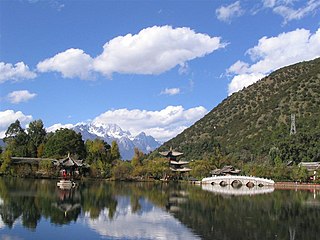
Black Dragon Pool is a famous pond in the scenic Jade Spring Park located at the foot of Elephant Hill, a short walk north of the Old Town of Lijiang in Yunnan province, China. It was built in 1737 during the Qing dynasty and offers a spectacular view of the region's tallest mountain, Jade Dragon Snow Mountain, over its white marble bridge.
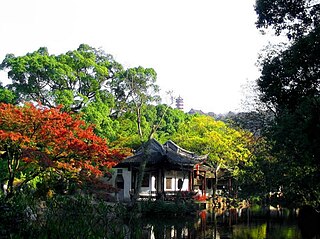
Jichang Garden is located inside Xihui Park, east side of Huishan, east side of western suburban of Wuxi, Jiangsu Province, China. It is close to Huishan Temple. Jichang Garden is a famed Chinese classical garden in South China, and it was claimed as a national protected location of historical and cultural relics on 13 January 1988. Xiequ Garden (谐趣园) inside the Summer Palace and Guo Ran Da Gong (廓然大公) in Yuanming Yuan in Beijing both imitated Jichang Garden.

The Baotu Spring is a culturally significant artesian karst spring located in the city of Jinan, Shandong, China. It is mentioned in the Spring and Autumn Annals, one of the Five Classics of Chinese literature, and was declared the "Number One Spring under the Heaven" by the Qianlong Emperor in the Qing dynasty.

The Baimai Springs are a group of artesian karst springs located in Mingshui Subdistrict, Zhangqiu District, Jinan, Shandong Province, China about 25 kilometres west from the city centre of Jinan. The site of the springs is renowned for its natural beauty and as the one-time residence of the female Song Dynasty poet Li Qingzhao.

The Five Dragon Pool is a culturally significant pond fed by artesian karst springs in the city of Jinan, Shandong Province, China. It is one of the best known springs among the 72 famous springs of Jinan.
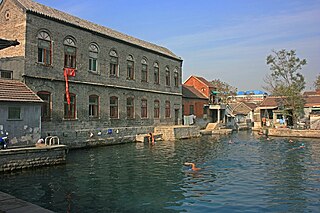
The Zhuoying Spring is a culturally significant artesian karst spring located in historical center of the city of Jinan, Shandong Province, China. It is listed among the 72 famous springs (Chinese: 七十二名泉; pinyin: Qīshíèr Míng Quán) of Jinan. The spring forms a large spring pool, the Palace Pool, that is used as a public outdoor swimming pool.
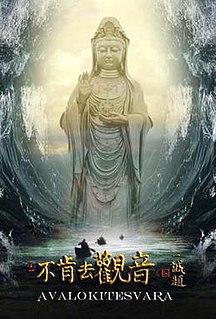
Avalokitesvara, also known as Bu Ken Qu Guan Yin, is a 2013 Chinese religious film directed by Zhang Xin. It is loosely based on a legend about how Mount Putuo in China's Zhejiang Province became the bodhimaṇḍa of the bodhisattva Avalokiteśvara, who is better known in Chinese as Guanyin. The film starred Li Chun, Nie Yuan, Nakaizumi Hideo, Siqin Gaowa, Nakano Ryoko and Mou Fengbin in the leading roles. It was shown at the 37th Montreal World Film Festival in 2013 and was named one of the four World Greats.
Twelve Views of Bayu are popular scenic views in and around the city of Chongqing, China. Ba and Yu are old names of Chongqing in imperial time. Influenced by Eight Views of Xiaoxiang in Hunan Province, people in Chongqing listed their own most beloved views during the reign of Tianshun Emperor of Ming Dynasty. Scenic views in the list changed throughout the history. Some scenic views appeared in earlier lists no longer exist in modern days due to the change of physical geography, landscapes and land-uses.
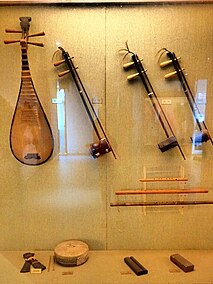
Xiju, also known as Wuxi opera, is a genre of opera which originated in the southern region of the Yangtze River Delta in China. It evolved from "Tanhuang" (滩簧), a folk opera art in the region of Wuxi and Changzhou of Jiangsu province. As one of the main local operas in Jiangsu Province, Wuxi opera has been reputed as "a piece of plum flower in Taihu Lake", a title given to the three major operas in East China, alongside Yue opera and Huangmei opera.

